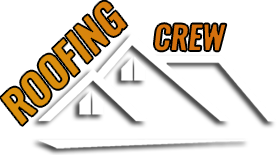Your local Maryville roofing contractor knows that high winds can cause damage to your roof. Despite the fact that most tiles are built to resist wind gusts of 90 mph or more, shingle roofs are especially sensitive to high winds. As a homeowner, it is critical to understand how to assess your roof for damage after wind speeds of up to 50miles per hour.
What is Wind Damage?
Winds do not blow uniformly across a roof and usually tend to damage the coers and edges of a roofline. A shingle coers or small piece can be twisted or to by the wind. This may expose your roof and leave it vulnerable to leaks.
Roof shingles might pull up as a result of high winds. High winds can generate a vacuum that “lifts” tiles upwards, freeing the nails that hold them in place. If the shingles lift and the sealant between them are broken, leaks can happen.
Another risk in the case of high winds is a tree or limb falling on your roof. Before storms or high winds occur, cut down any trees that are drooping over your roof. Wind-blown debris is often more damaging to your roof than the wind itself.
Wind Damage Detection Suggestions
Roof leaks are the easiest to discover since water is entering your home where it should not be. In your attic or on the top level of the house under the roof, look for wet spots or water leaking from the ceiling. Make sure you contact a professional Maryville roofer as soon as possible if you see any warning signs!
Missing Shingles – Strong winds, heavy rain, or fell tree branches can all cause shingles on your roof to be pulled off.
Curly Shingles – Curly shingles are most typically seen on roofs at stress points such as edges, coers, around chimneys, along ridges, and so on. Curled shingles no longer prevent water from penetrating the roof, but they are more difficult to find than a missing shingle.
Lifted Shingles – The nails have loosened, potentially compromising the seal between each shingle layer. As a result, there is an increased danger of leaks caused by loose nails that have raised the shingle up, potentially rupturing the sealant between each shingle layer.
Deterioration – Strong gusts and heavy rains can blow away shingle grains and deposit them in the gutter. If you notice an abundance of shingle particles in your gutter, contact a competent roofer to evaluate your roof.
Chimney Flashing – Missing or split chimney flashing should be replaced right away. This is a high-wind stress point that may be quickly elevated by a strong wind striking at the precise right angle.
Hire an Experienced Maryville Roofing Contractor
A well-made roof produced by a qualified Maryville roofing contractor, like any other roofing work, will last longer and more efficiently than a poorly planned one. Our house roofing specialists are trained and certified in all of the most recent roofing processes and products. We provide the most extensive warranties in the roofing industry! Call (865) 919-4847 right now to schedule a free estimate.
The post Maryville Roofing Contractor Tips: Wind Damage appeared first on .






